The Spanish Explorers that shaped the 16th century were ambitious, fearless, and men of their time. Ironically, many were not even Spanish and had been overlooked by other monarchies when they requested their voyages be funded.
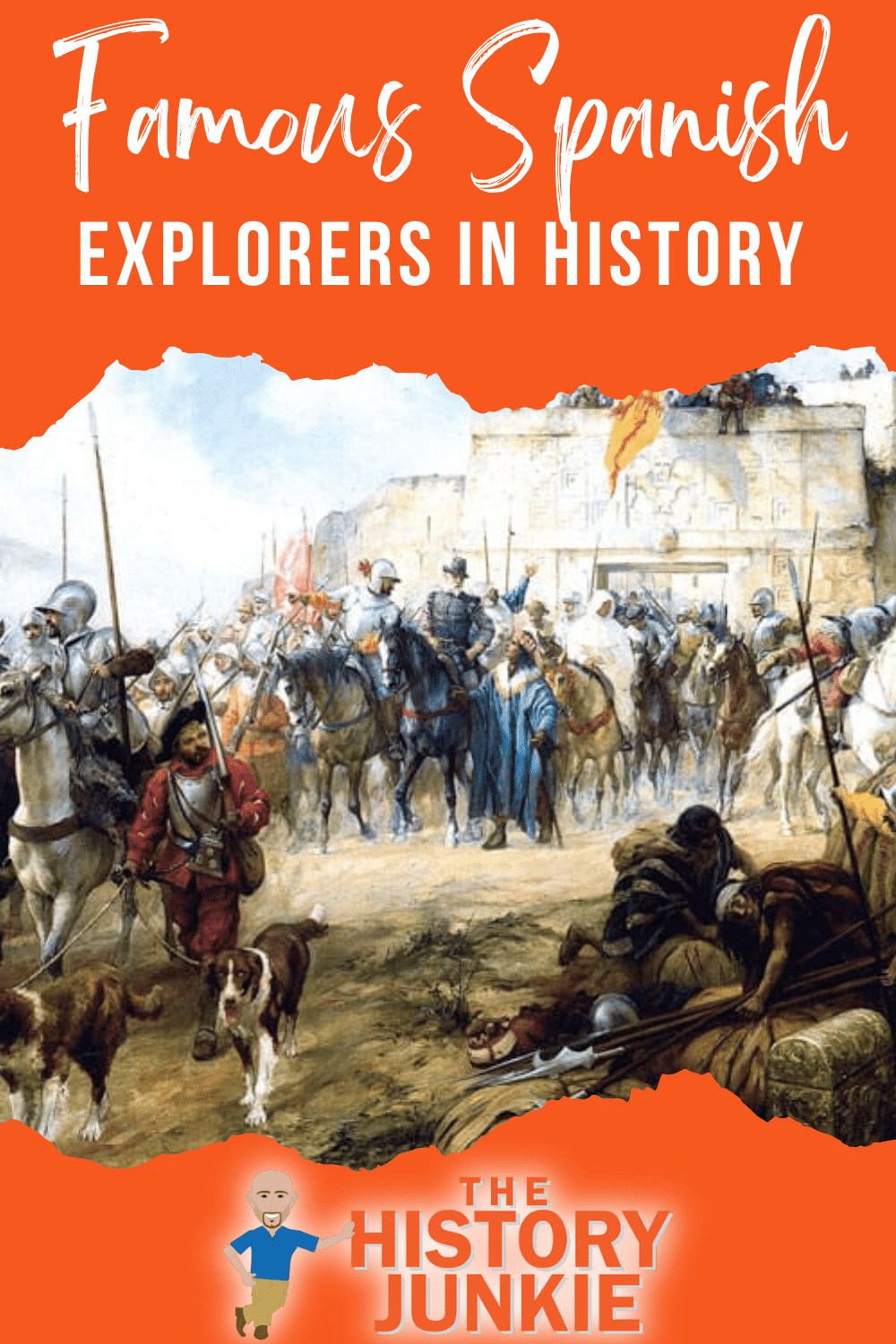
During the 15th century, the Muslims closed the Great Silk Road and blocked trade with Asia. In response, the European countries had to look for other trade partners or other routes.
Portugal was first and continued to push down the coast of Africa and eventually made it around the tip of Africa and into the Indian Ocean, which allowed them to trade with the Far East.
In the 15th century, Christopher Columbus found a different trade route and asked Spain to sponsor a voyage to which they agreed.
The early risk the Spanish crown made paid off when they discovered a New World, and they were the first to begin to colonize and develop it.
Jump to:
- 1. Christopher Columbus
- 2. Amerigo Vespucci
- 3. Hernan Cortes
- 4. Francisco Pizarro
- 5. Ponce De Leon
- 6. Hernando de Soto
- 7. Vasco Nunez de Balboa
- 8. Ferdinand Magellan
- 9. Pedro de Alvarado
- 10. Cabeza de Vaca
- 11. Juan de Onate
- 12. Panfilo de Narvaez
- 13. Deigo de Almagro
- 14. Francisco Coronado
- 15. Francisco Hernandez de Cordoba
- 16. Alonso de Alvarado
- 17. Pedro Menendez de Aviles
- 18. Pedro de Heredia
- 19. Juan Rodriguez Cabrillo
- 20. Phillip von Hutton
1. Christopher Columbus

Christopher Columbus was an Italian explorer and navigator from the Republic of Genoa who completed four Spanish-based voyages across the Atlantic Ocean sponsored by the Catholic Monarchs, opening the way for the widespread European exploration and European colonization of the Americas.
His expeditions were the first known European contact with the Caribbean and Central and South America.
Columbus was born in Genoa, Italy, in 1451. He began his career as a sailor in the merchant marine and then worked as a mapmaker and navigator.
In 1484, he presented a plan to the Spanish monarchs, Ferdinand and Isabella, to sail west across the Atlantic Ocean in search of a new route to Asia.
The monarchs agreed to finance his expedition, and Columbus set sail on August 3, 1492, with three ships: the Niña, the Pinta, and the Santa María.
On October 12, 1492, Columbus landed on an island in the Bahamas, which he believed to be part of Asia. He called the island San Salvador.
Columbus made several more voyages to the Americas, and he eventually explored the Caribbean islands, Central America, and South America. He never realized that he had landed on a new continent, and he died believing that he had reached Asia.
Columbus's voyages had a profound impact on the world. They opened up the Americas to European exploration.
Soon, the Caribbean Sea would be the playground of world empires and pirates.
Also Read: 20 Famous Pirates in History
2. Amerigo Vespucci
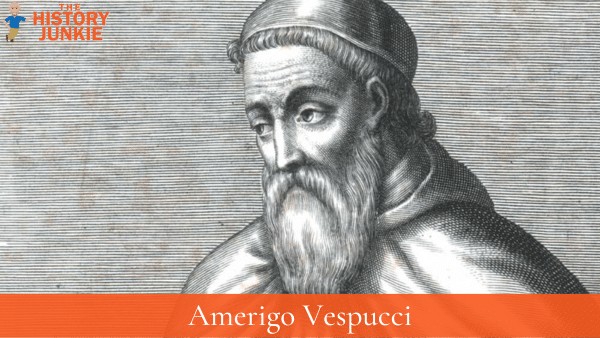
Amerigo Vespucci was an Italian merchant and explorer who completed four voyages to the Americas between 1497 and 1504. He was the first European to recognize that these lands were not part of Asia but a new continent.
His letters describing his voyages helped to popularize the idea of the Americas as a new world, and his name was eventually given to the entire Western Hemisphere.
Vespucci was born in Florence, Italy, in 1454. He studied astronomy and navigation at the University of Florence and then worked as a merchant for the Medici family.
In 1497, he was hired by the King of Spain to participate in an expedition to the Americas. Vespucci's first voyage took him to the coast of South America, where he explored the coastline and made contact with the native people. He returned to Spain in 1499.
Vespucci made three more voyages to the Americas, in 1501-1502, 1503-1504, and 1505-1506.
He sailed for Portugal from 1501 - 1504 and then returned to sail again for Spain. This did not seem to hurt his relationship with either king.
The Spanish Conquistadors would change the course of history.
After Christopher Columbus discovered a new world, it ignited Europe and its powers. Spain would be the first country to get a foothold in the New World, and they did so on the back of their Conquistadors.
Also Read: Age of Exploration Timeline
The following is a list, not a rank, of the most famous Spanish Conquistadors that changed the world forever. Their swords would end ancient civilizations, and the diseases they carried would cripple Native Americans.
The Aztecs, Incas, Mayans, and many other Native American tribes had ruled their respective continents for centuries, and by the end of the 16th century, their cultures would be in ruin.
Other Articles:
Amerigo Vespucci Timeline
Facts About Amerigo Vespucci
3. Hernan Cortes
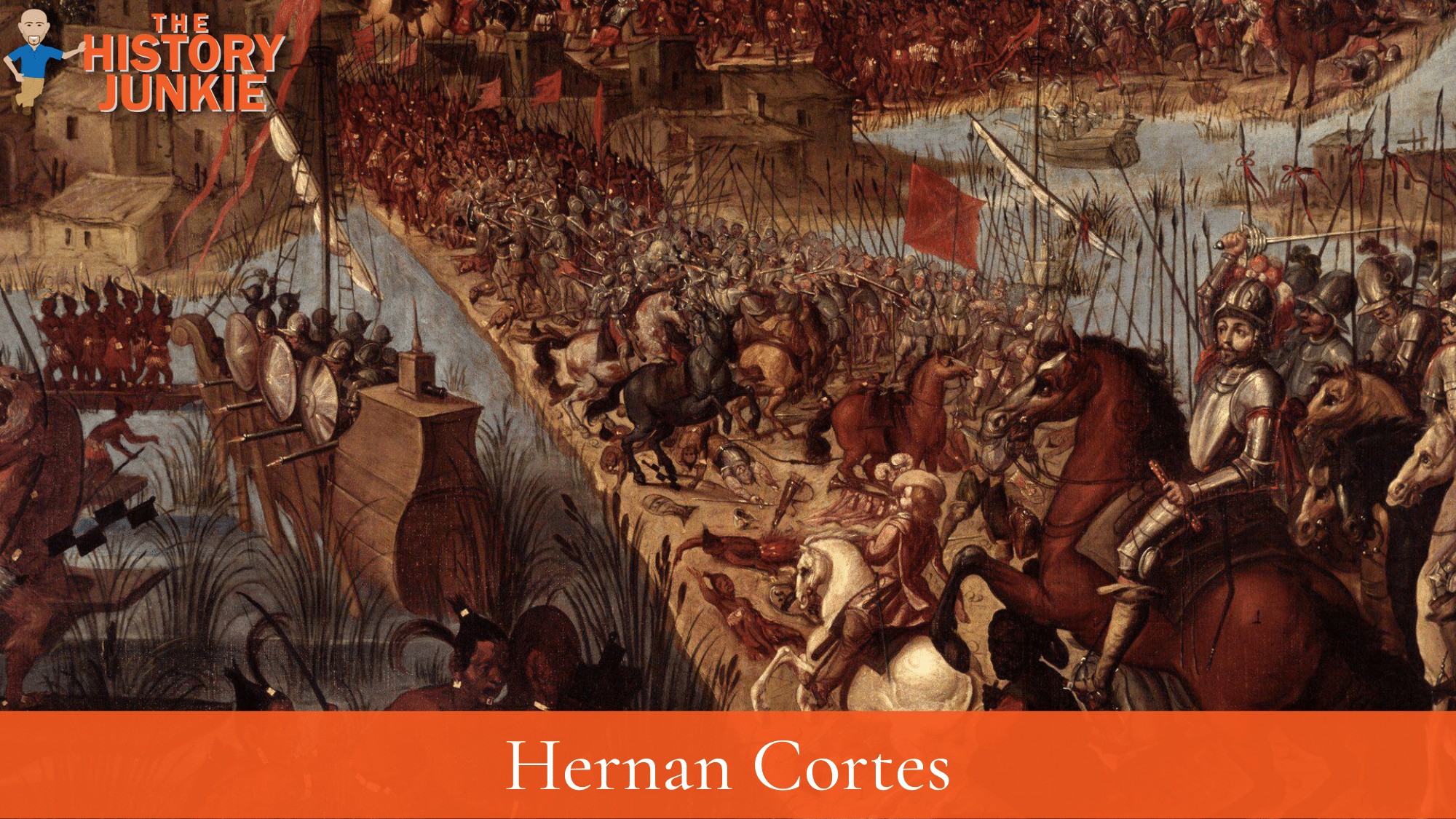
The most famous Spanish Conquistador is Hernan Cortes, who conquered the Aztecs and created opportunities for those who followed him.
He was fierce in his conquest and the quest for gold, but most do not know that his attempt to conquer the Aztec Empire almost failed.
Also Read: Hernan Cortes Timeline
After assassinating Montezuma, Cortes and his men were ambushed by Aztec warriors who had figured out that the Spanish Conquistador was not a god but a conqueror. Many of his men were caught and slaughtered on the altar of Aztec gods, while Cortes barely escaped with his life.
The Aztecs chased the Spanish from their land but did not know that the weapons of their destruction had already been released within their walls. European disease, specifically smallpox, would devastate their population.
Also Read: 15 Facts About Hernan Cortes
This would be true for most Native American Tribes throughout North and South America. They did not have immunity, and their populations would drop by 30 - 80%.
Cortes and his Native allies returned to a weakened Aztec nation. He would utilize European warfare techniques that the Aztecs were not familiar with, such as siege warfare and a divide-and-conquer strategy.
Also Read: 15 Famous Spanish Conquistadors
These tactics, along with disease, destroyed the Aztecs.
Cortes would become the Governor of New Spain and live another 26 years after the conquest.
4. Francisco Pizarro
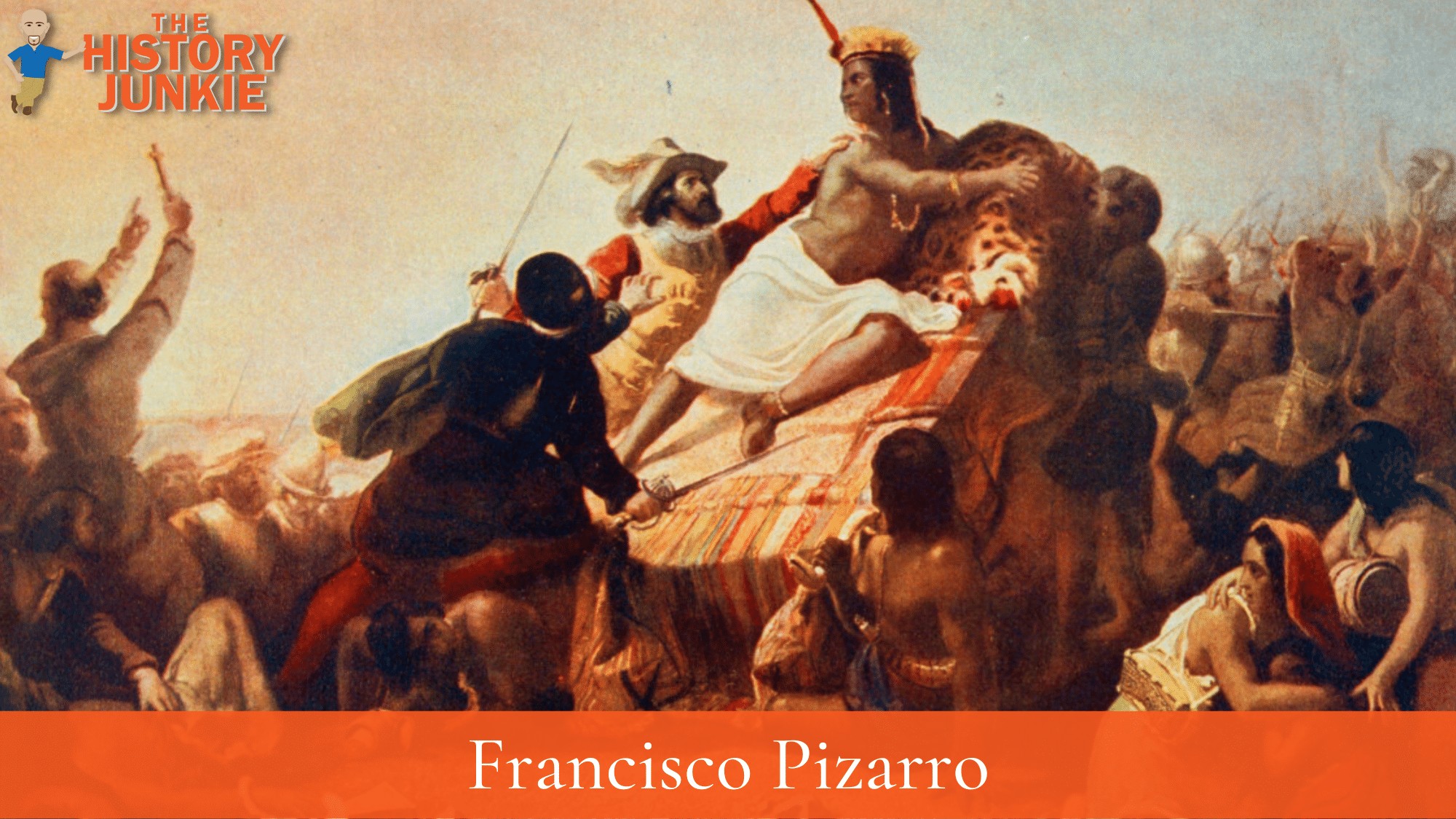
Hernan Cortes conquered the Aztec Empire, while Francisco Pizarro claimed his fortune by leading the conquest of the Incan Empire.
The arrival of the Spanish in the New World introduced the natives to European disease. Just as Cortes conquered the Aztecs due to the loss in population, Pizarro would also benefit from the illnesses that plagued the natives.
The Incas lost 65 - 95% of their population prior to Pizarro's arrival. This included their leader, Wayna Qhapaq.
Also Read: Famous Native Americans in American History
With their leader dead, the empire fell into the hands of his two sons, which then began a civil war among the nation. Atahualpa would win the civil war, and when Pizarro arrived, he organized a meeting with the young ruler.
The first evening was fun, with many drinks and horse displays. Still, the following day, Pizarro launched a surprise attack on Atahualpa and killed 7,000 of his warriors without losing a single Spanish man. Atahualpa would be captured and eventually executed.
Pizarro then captured Cuzco, but he would not enjoy his spoils peacefully. The Incas had adapted to the Spanish style of warfare and had developed effective counters to their tactics.
Perhaps the most effective of these military innovations was the one that dealt with the Europeans' greatest advantage on the battlefield: horses. Incan soldiers would offer battle but hold their position until the Spaniards had concentrated their cavalry in order to break the indigenous line.
They would then fall back before the cavalry charge and draw the Europeans into a canyon where prepositioned forces could crush them under avalanches of rocks and missile weapons. Instead of charging the numerically inferior Europeans as they had done early on, Incan soldiers used their discipline and knowledge of the terrain in order to draw the armored cavalry charge into a death trap.
Well-documented battlefield deaths show that many more Spaniards died in these battles than in the early days of the war when, theoretically, the Inca had a much greater advantage.
Despite winning the majority of the battles, the inability of the Incan forces to overwhelm Cuzco's fortifications, manned as they were by only 200 fighting men armed with gunpowder weapons, signaled the definitive victory of Spanish forces.
Despite his success, Francisco Pizarro and another conquistador, Diego de Almagro, had a contentious rivalry that split the Spanish into factions and would last through the generations. Pizarro would be assassinated by those loyal to the Almagro family in 1541.
5. Ponce De Leon
Ponce de Leon was the first Spaniard to explore Florida. While he did not conquer any of the native tribes like Cortes or Pizarro, he supposedly searched for the mythical fountain of youth and mapped out what became known as La Florida.
After mapping out his discoveries, he returned to Spain, where he was knighted by King Ferdinand and made governor of Puerto Rico.
King Ferdinand also gave him authority to settle Florida, which Ponce de Leon would attempt when he sailed back to the New World.
While trying to settle the new territory, he came in contact with the Calusa tribe, and the contact was not ideal.
They were not friendly to him or his men. The colonization attempt was abandoned, and Ponce de Leon was seriously wounded in the skirmish.
The Spanish returned to Cuba, where Ponce tried to heal from his wounds, but he died in Cuba instead.
6. Hernando de Soto
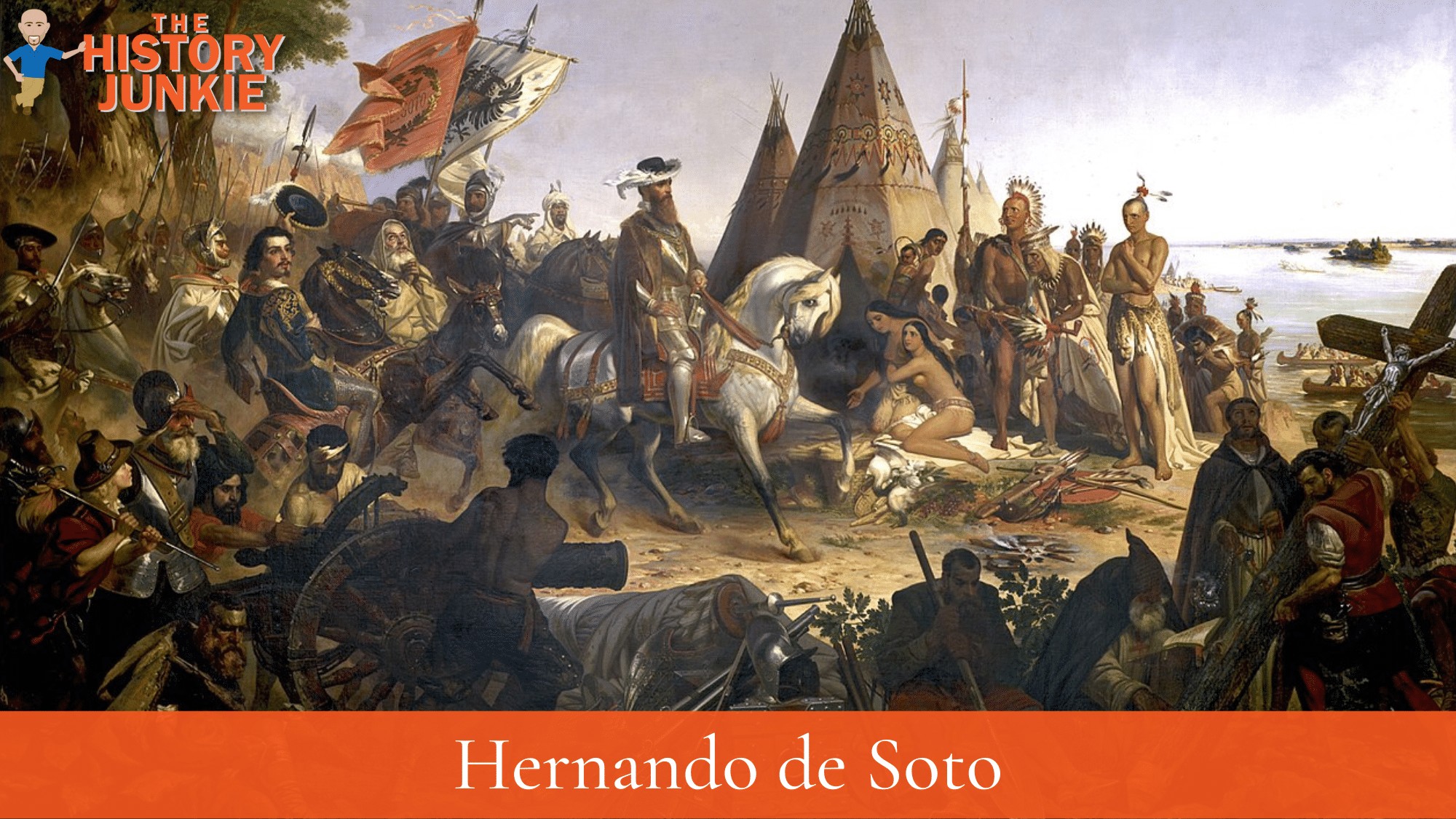
Hernando de Soto was a man who impacted the South and North American continents.
He was with Francisco Pizarro when the Incan Empire fell and was the first to enter the city of Cuzco. He also witnessed the death of the Incan ruler.
He returned to Spain and was given the authority to conquer and colonize Florida. This task would prove to be more difficult, and he would never find a permanent colony in Florida, however, he would be the first Spanish Conquistador to explore the Southeastern part of North America.
He spent over two years exploring the continent and would be the first to discover the Mississippi River. Although it was an important discovery for Hernando de Soto, it was an obstacle that he had to overcome. His mission was to find riches, not rivers.
In order to avoid conflict with the natives, he convinced them that he was a deity. During his journeys, he interacted with native tribes such as the Apache and other Southeast Indian tribes. He met a female chief and interacted with the powerful Tuscaloosa.
He had a conflict with Tuskaloosa, who, in response to de Soto's actions against him and his tribe, attacked them. Tuskaloosa lost, and de Soto burned their village.
Hernando de Soto became very sick and would die of fever in 1542. His men buried him secretly to avoid conflict with the natives. Although some were beginning not to believe his lie of being a deity, some still believed he was immortal.
7. Vasco Nunez de Balboa
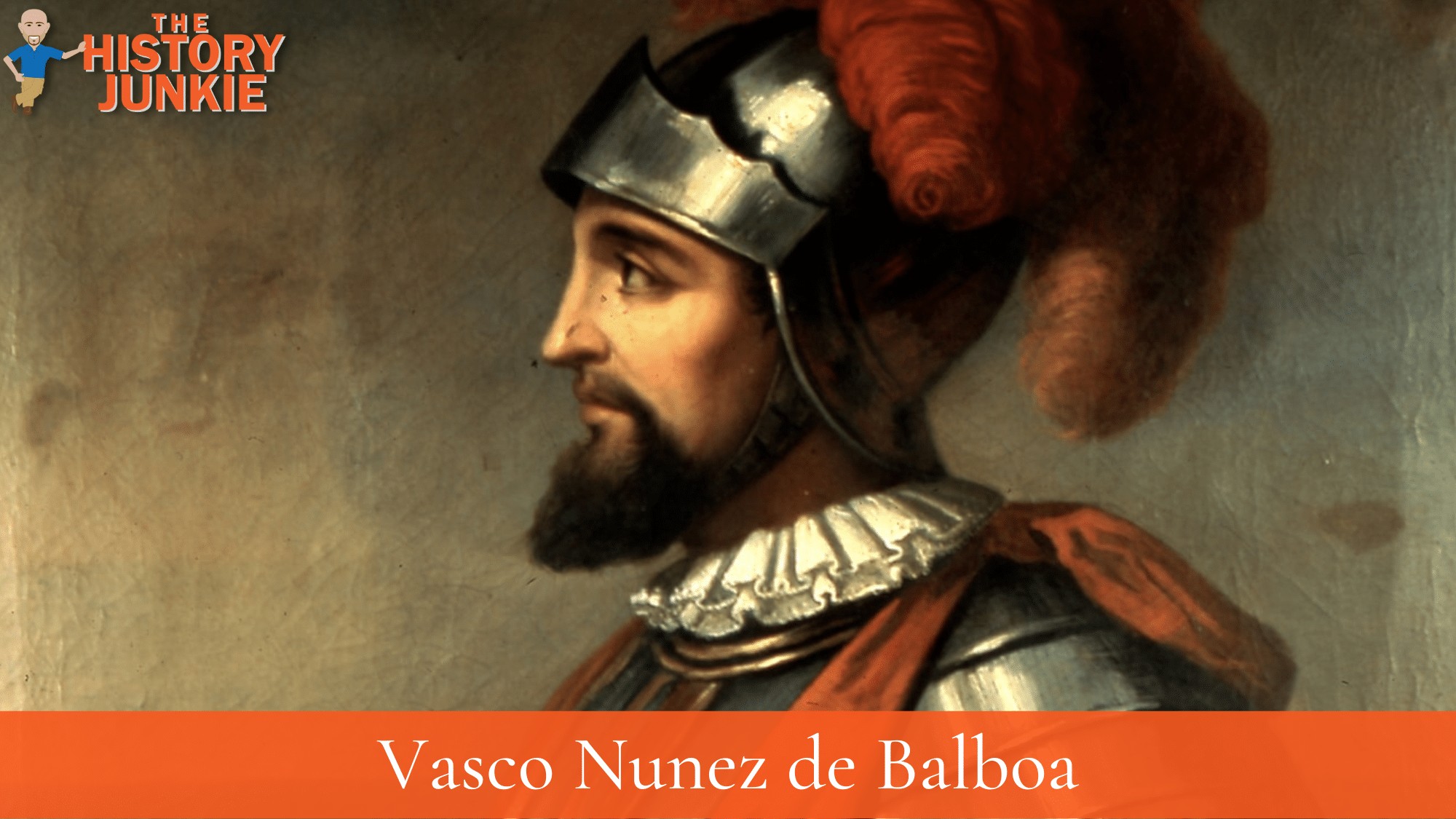
The tragic Conquistador.
Vasco Nunez de Balboa would help found the first permanent settlement on the mainland of South America and would become the first European to set eyes on the Pacific Ocean while on the continent of North America.
He came from lower nobility but eventually rose to prominence. He settled in Hispaniola, where he tried his hand at farming, which did not work out well for him. Once his creditors began to come after him, he hopped on a boat and sailed to mainland South America.
He would eventually lead an expedition of 190 Spaniards, 1,000 Indian porters, and some bloodhounds. He would lead them through dense jungles and swamps. He would fight off hostile natives and eventually lay eyes on the Pacific Ocean.
He would return triumphantly with much wealth in gold, pearls, and slaves. During this time, he would develop a friendship with Pedrarias, who would become his father-in-law. Pedrarias had influence, and after Balboa pleaded with him to allow him to explore the South Sea again, he gave him permission to do so for a year and a half.
His father-in-law would deceive Balboa and urge him to come home. Balboa agreed to come home and, on his way, would meet Francisco Pizarro, who would arrest Balboa in the name of the governor and accuse him of trying to usurp Pedrarias' power and create a separate government in the South Sea.
Balboa denied these allegations, but it did not matter. He was sentenced to death by beheading, and the sentence was carried out.
8. Ferdinand Magellan
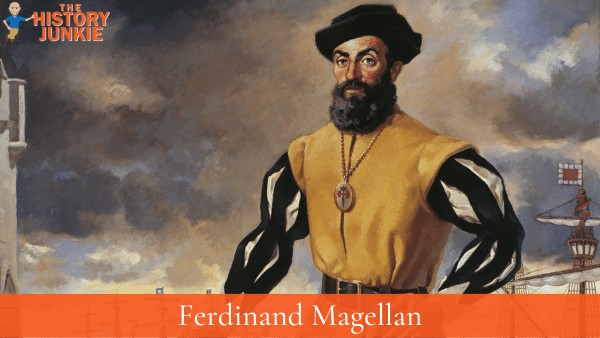
Ferdinand Magellan was born in Sabrosa, Portugal, to a noble family.
Magellan served in the Portuguese navy and fought in several battles against the Ottomans. In 1517, he proposed a plan to the Spanish king, Charles V, to sail west across the Atlantic Ocean to reach the Spice Islands in Indonesia.
Charles V agreed to finance the expedition, and Magellan set sail in 1519 with five ships and a crew of about 270 men.
Magellan's expedition sailed across the Atlantic Ocean and reached the coast of South America in 1520. They then sailed south along the coast, looking for a passage through the continent.
In November 1520, they found a narrow strait that led to the Pacific Ocean. Magellan named the Strait after himself, and it is now known as the Strait of Magellan.
The expedition crossed the Pacific Ocean in 1521, and they reached the Philippines in March of that year. Magellan and his men made contact with the local people, and they were soon involved in a conflict with the ruler of Mactan Island.
Magellan was killed in the battle, but the expedition continued under the command of Juan Sebastián Elcano.
The remaining ships of the expedition eventually reached Spain in 1522, completing the first circumnavigation of the Earth. Only one ship, the Victoria, and 18 men returned to Spain.
Magellan's expedition was a major achievement and would not be duplicated until Sir Francis Drake.
9. Pedro de Alvarado
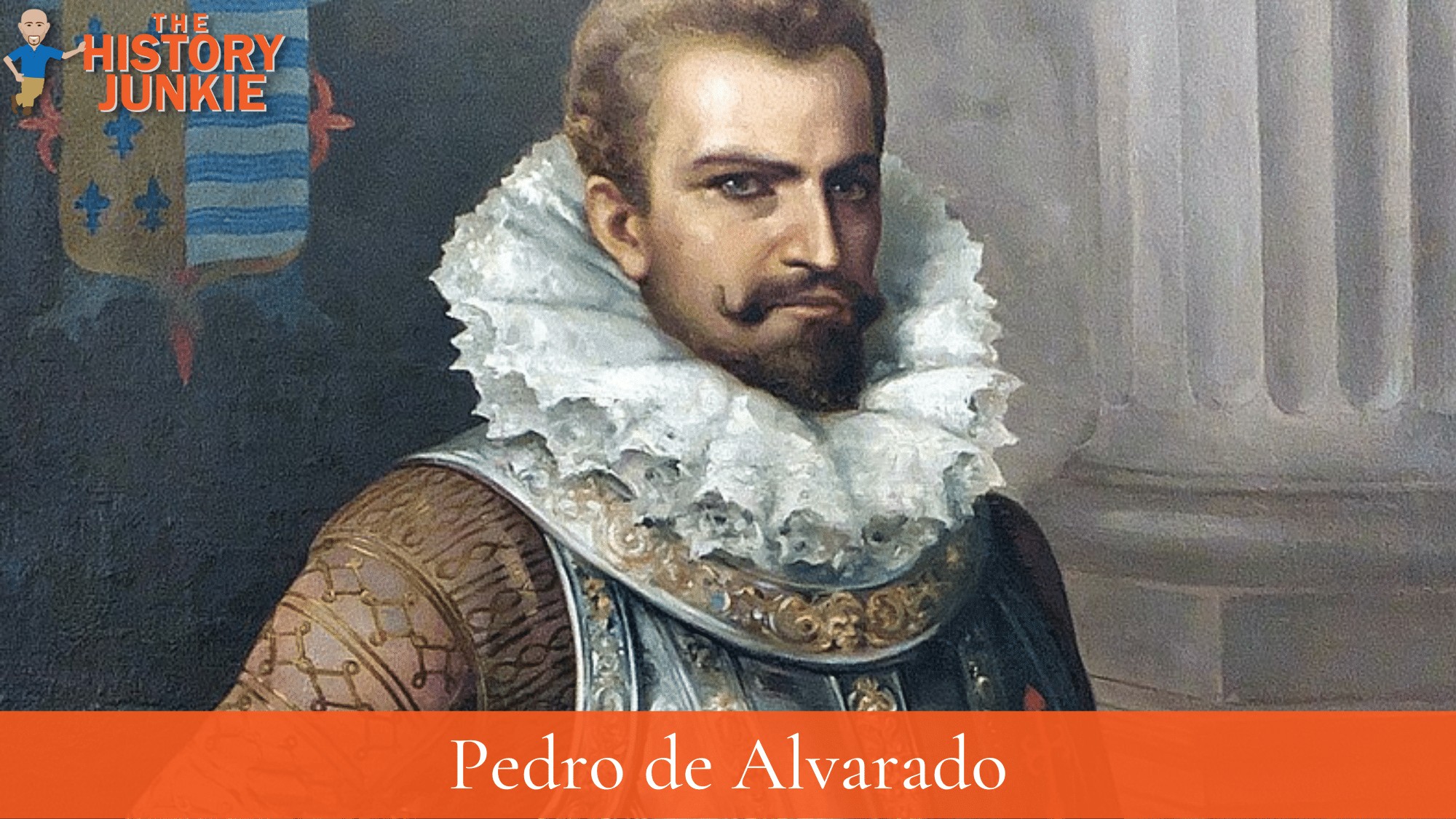
Pedro de Alvarado was known for his dashing good looks and his knack for brutality. He would become one of the more successful Spanish Conquistadors.
He was with Hernan Cortes when they conquered the Aztecs, and after helping with the destruction of one empire, he turned his attention to the Maya civilization and the rest of Central America.
Alvarado, along with his hardened Spanish veterans and native allies, sacked a Mayan village and took many treasures. He continued down the Pacific coast and conquered Guatemala, El Salvador, and Honduras.
He also journeyed into South America after hearing of riches in modern-day Peru. When he arrived, he learned that the Incan Empire had already been conquered by Francisco Pizarro.
He began to make plans to build a Spanish fleet on the western coast of Mexico and then sail to China and the Spice Islands.
While building this fleet, another Conquistador requested he help break the siege that the natives had him under. While preparing to journey to aid his fellow warrior, his horse became spooked, and the powerful Conquistador was crushed.
He would die a few days later after the freak accident.
10. Cabeza de Vaca
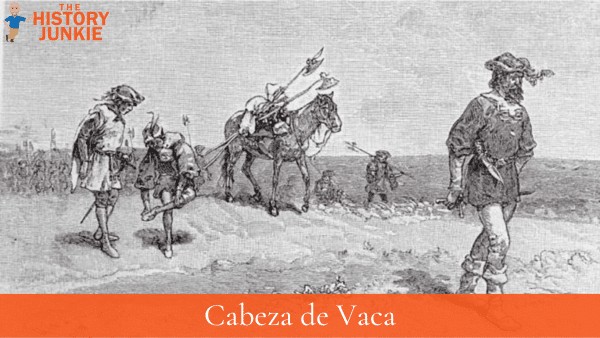
Cabeza de Vaca was a Spanish conquistador and explorer who led an expedition through the southwestern United States and northern Mexico in the 16th century.
He was one of the first Europeans to see the Grand Canyon and the Rio Grande.
Cabeza de Vaca was born in Jerez de la Frontera, Spain, in c. 1490. He joined the Spanish army and fought in the Italian Wars.
In 1527, he was part of an expedition led by Panfilo de Narvaez to explore and colonize Florida. The expedition was a disaster, and Cabeza de Vaca and a small group of survivors were shipwrecked on the coast of what is now Texas.
Cabeza de Vaca and his companions spent the next eight years traveling through the Southwest, living among the native people.
They became known as "the lost men" and were eventually captured by the Spanish. Cabeza de Vaca returned to Spain in 1536 and wrote a book about his adventures, titled "Naufragios" ("Shipwrecks").
Cabeza de Vaca's book is an important source of information about the native people of the Southwest. It is also a fascinating account of his own personal journey, from shipwrecked castaway to explorer and survivor.
11. Juan de Onate
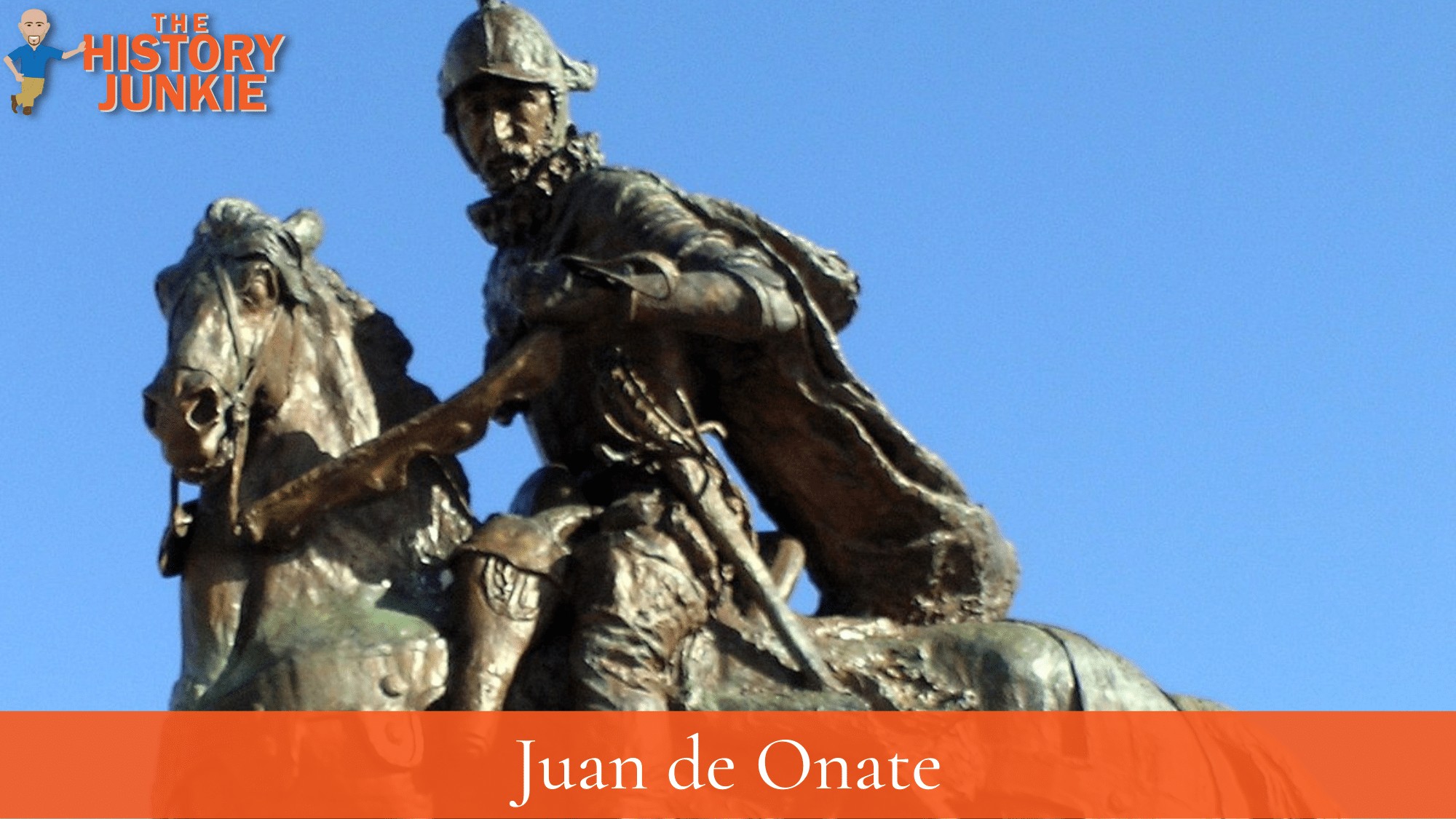
One of the more controversial Spanish Conquistadors is Juan de Onate.
He is controversial for a good reason. The actions he took against the Pueblo Tribe and the massacre he inflicted on them are still remembered to this day.
In October 1598, a skirmish erupted when a squad of Oñate's men stopped to trade for food supplies from the Acoma Pueblo. The Ácoma themselves needed their stored food to survive the coming winter. The Ácoma resisted, and 11 Spaniards were ambushed and killed, including Oñate's nephew, Juan de Zaldívar.
In January 1599, Oñate condemned the conflict as an insurrection and ordered the pueblo destroyed, a mandate carried out by Juan de Zaldívar's brother, Vicente de Zaldívar, in an offensive known as the Ácoma Massacre. An estimated 800–1,000 Ácoma died in the siege of the Pueblo.
If that is not bad enough, he placed the survivors of the massacre on trial and sentenced those older than 12 to 20 years of forced servitude and also cut off the tips of their toes.
After the massacre, he began his search for the mythical city of gold that he never found. He also explored the Colorado River.
News of his cruelty reached Mexico City, and he was eventually recalled and sent back to Spain, where he died.
He is often called the Last Conquistador.
12. Panfilo de Narvaez
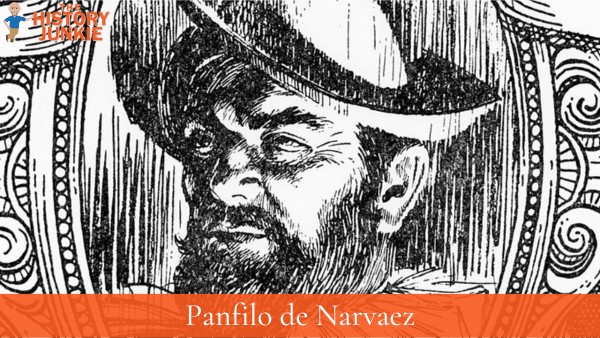
Panfilo de Narvaez was a Spanish conquistador who led an expedition to Florida in 1527. The expedition was a disaster, and Narváez and his men were eventually killed by the Apalachee Indians.
Narvaez was born in Valladolid, Spain, around 1478. He was a soldier and a member of the Spanish nobility. In 1510, he was sent to Cuba to help conquer the island. He later served as the lieutenant governor of Cuba.
During these years, he was sent to Mexico to deal with Hernan Cortes, who had disregarded orders. He and his men were defeated. He was imprisoned, and his remaining men joined Cortes. He was later released.
In 1527, Narvaez was appointed governor of Florida by the Spanish king, Charles V. He was given a fleet of five ships and a force of about 600 men. Narváez's mission was to explore Florida and establish a Spanish colony.
Narvaez landed in Florida in April 1528. He and his men marched inland, but they were soon met by hostile Apalachee Indians. The natives attacked the Spaniards, and Narvaez was wounded in the eye. He and his men were forced to retreat to the coast.
Narváez decided to build boats and sail to Mexico. He and his men built five boats, but they were soon caught in a storm. The boats were destroyed, and Narváez and his men were stranded on the coast of Florida.
Narvaez and his men spent the next eight years trying to survive in Florida. They ate snakes, lizards, and other animals.
They also ate the flesh of the dead. In 1536, a group of Narvaez's men were rescued by a Spanish ship. Narvaez was not among the survivors.
13. Deigo de Almagro
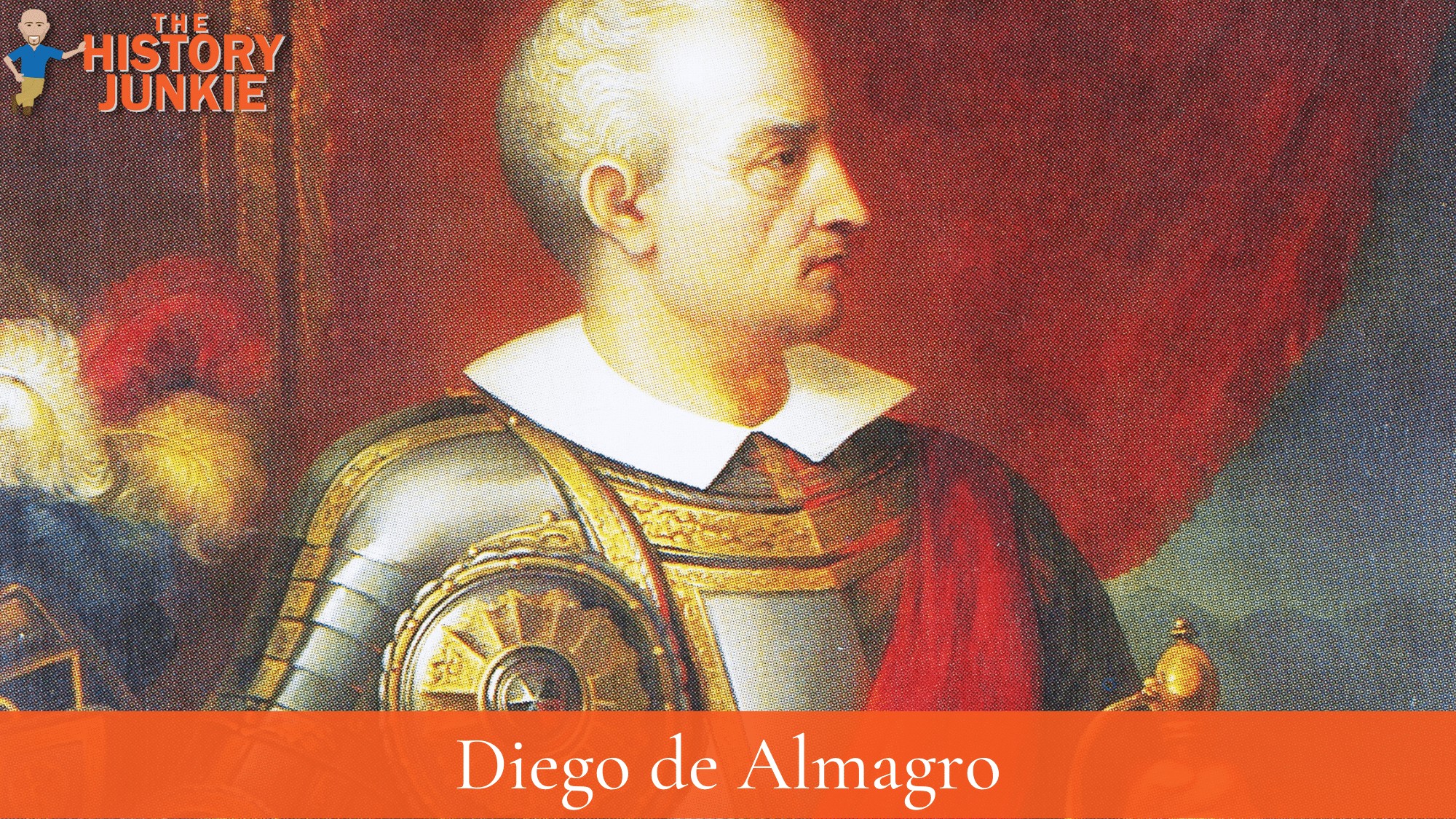
Diego de Almagro is often overshadowed by Francisco Pizarro because the two Spanish Conquistadors shared a rivalry, participated in the same conquest, and were eventually executed by his rival.
He played a key role in the conquest of the Incan Empire, and after the conquest, he mobilized his men again and began to explore Chile in search of more riches. He did not find any wealth in Chile, and the natives put up stiff resistance.
He and the Pizarro brothers would have an intense rivalry that would lead to his death and eventually Francisco Pizarro's.
When he returned from his expedition, he took control of Cuzco and imprisoned two of the three Pizarro brothers. Francisco negotiated for the release of his brothers and said he would give up Cuzco in return for his brother's safety.
Pizarro did not have any intention to give up the city and used the passing of time to prepare his army. Diego de Almagro became very sick, and the Pizarro brothers jumped at the opportunity and defeated his men.
Diego was eventually caught by Francisco Pizarro and then executed by decapitation.
14. Francisco Coronado
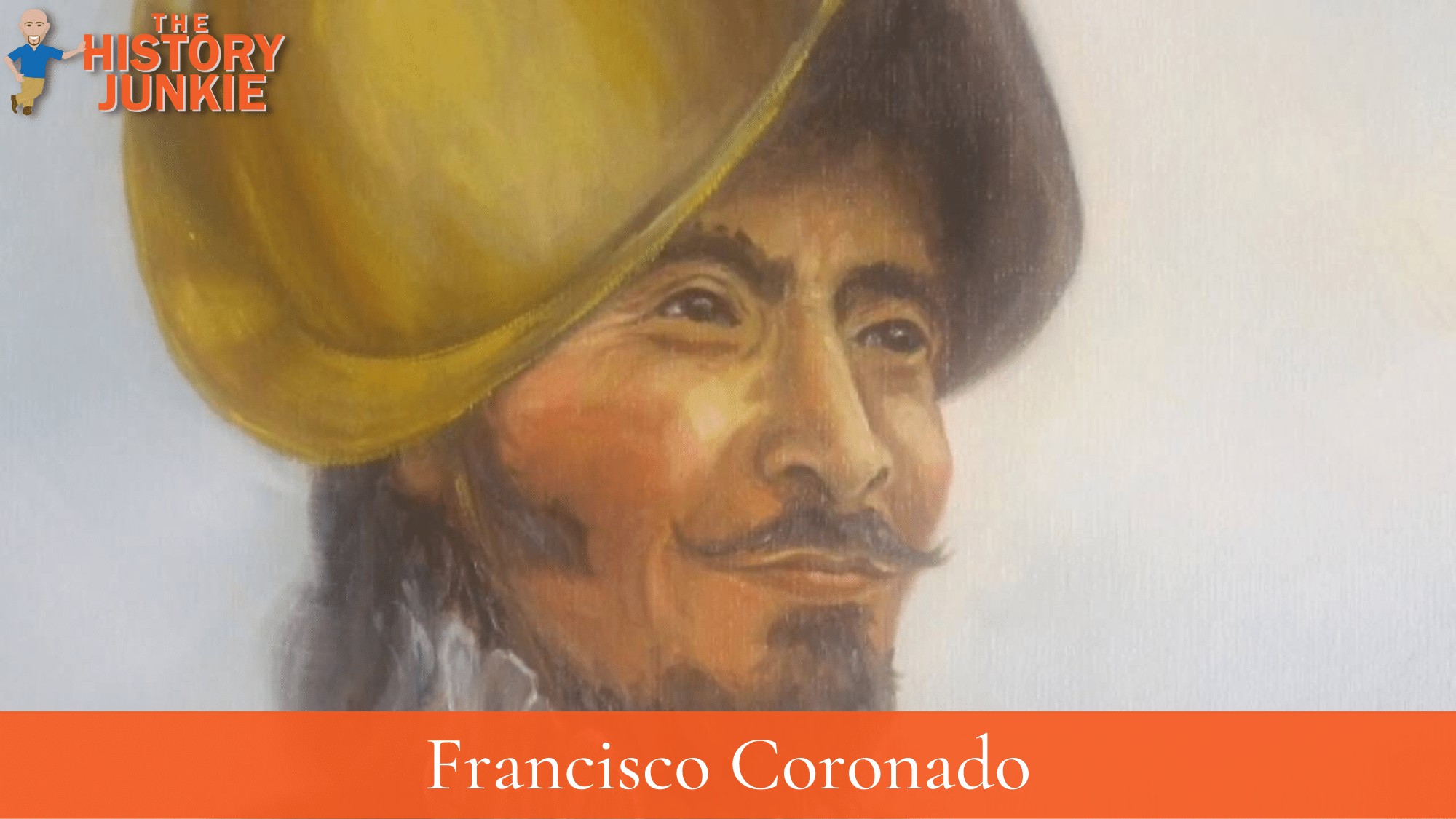
Francisco Coronado, like all Spanish Conquistadors, had plans for fame and fortune, but his expedition would not give him what he desired.
He traveled from Mexico to the Southwest United States, where he came in contact with many Native Americans. His goal was to find the mythical cities of gold.
His first contact was with the Zuni Tribe, who did not allow his men to enter their city. Coronado and his men were starving and made unrealistic demands that would lead to a battle with the tribe. The ensuing skirmish constituted the extent of what can be called the Spanish Conquest of Cíbola. He never personally led his men-at-arms in any subsequent battles.
Coronado was injured in the fighting and sent scouts ahead. The scouts came in contact with the Hopi tribe, which was just as poor in precious metals as the Zunis.
Coronado continued his expedition north and soon realized that fortune was not going to happen for him. Instead, his mission changed into a reconnaissance one.
He saw bison, met other Native American tribes, explored the Colorado River, found the Grand Canyon, and became the first Spaniard to see multiple sights in the New World.
Unfortunately, the violence from Coronado would continue with the Tiguex War, which resulted in the death of hundreds of natives.
Coronado's expedition was a failure. It left him in bankruptcy and gave no value to the Spanish crown. He was one of the worst Spanish Conquistadors.
15. Francisco Hernandez de Cordoba
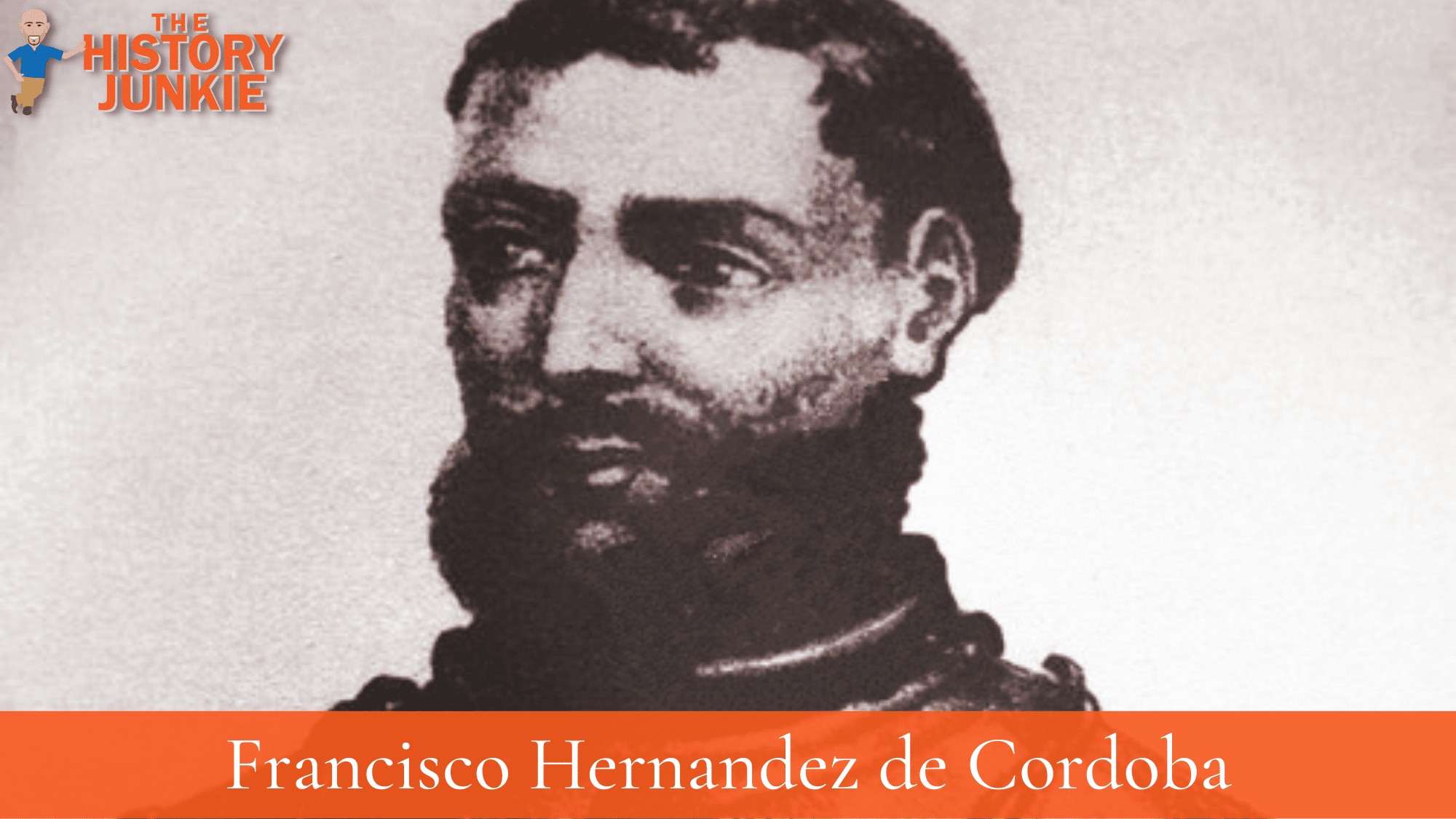
Francisco Hernandez de Cordoba would be the first of the Spanish Conquistadors to travel to the Yucatan Peninsula.
He resided in Cuba, but he and 110 others were disgruntled and wanted to find a new place to settle. He was granted permission by the Governor of Cuba and set off to find a place to settle.
The expedition was quick and ended terribly for Cordoba and the others with him.
He arrived in the Yucatan Peninsula and was greeted by hostile Maya natives. These natives were the first advanced civilization that the Spanish encountered in the New World. They had buildings that resembled the ones seen in Spain.
At first, the natives seemed friendly, but relations with them quickly soured, and despite the better weapons that the Spanish Conquistadors had, the Mayans had them outnumbered 300 to 1.
Francisco Hernandez de Cordoba was struck with 12 arrows and somehow managed to get back to his ship and make it to Cuba, where he died.
Cordoba's expedition was a failure, but news of the advanced civilizations reached the Spanish and would set the table for Hernan Cortes.
16. Alonso de Alvarado
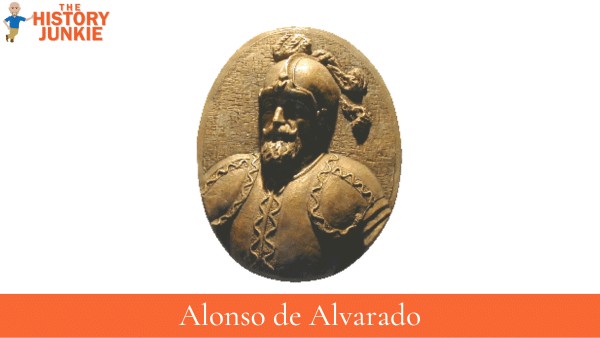
Alonso de Alvarado was born in Secadura de Trasmiera in 1500. He fought in Mexico under the orders of Hernán Cortés before joining the campaign of Francisco Pizarro in Peru.
Alvarado arrived in Peru in 1534 with his uncle Pedro de Alvarado in search of gold. He fought against the armies of Manco Inca Yupanqui that were besieging Lima in 1536. He also fought against Diego de Almagro in 1537 and at the Battle of Las Salinas in 1538.
He later fought at Chupas and Jaquijahuana.
In 1537, Alvarado commanded the troops of Pizarro's followers when Diego de Almagro claimed the mythical Inca city of Cuzco. He was defeated and captured by Almagro at the Battle of Abancay.
He escaped and rejoined Pizarro, whom he believed to be the legitimate governor of Peru. He took part in all the bloody troubles that followed, always as a prominent military leader.
He was unsuccessful when in immediate command, but he was still counted upon as a mainstay of the Spanish cause. He occupied a high military position.
A rebellion was initiated by another Conquistador in 1553, and Alvarado was put in command of the forces to put down the rebellion. He suffered a defeat which brought on a great depression and would result in his death.
17. Pedro Menendez de Aviles
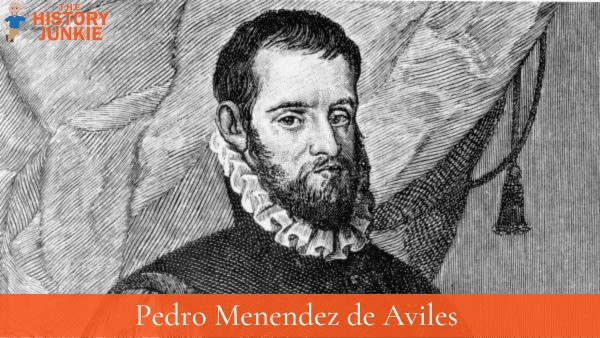
Pedro Menendez de Aviles is notable for planning the first regular trans-oceanic convoys, which became known as the Spanish treasure fleet, and for founding St. Augustine, Florida, in 1565.
This was the first successful European settlement in La Florida and the most significant city in the region for nearly three centuries.
St. Augustine is the oldest continuously inhabited, European-established settlement in the continental United States.
Avilés was also the first governor of Florida. By his contract with Philip II, he was appointed Adelantado and was responsible for implementing royal policies to build fortifications for the defense of conquered territories in Florida and to establish Castilian governmental institutions in desirable areas.
Later in life, Pedro Menéndez de Avilés traveled to southwest Florida in search of his son, Juan. There, he met with the Calusa tribe, an advanced maritime people, at what is now known as Charlotte Harbor.
Aviles negotiated an initial peace with the Calusas' leader, Carlos, and solidified the peace by marrying Carlos's sister, who took the baptismal name Doña Antonia.
The peace between the Spanish and the Calusas was uneasy. Menéndez's use of his new wife as a hostage in negotiations with her people, as well as his negotiating with the Calusas' enemies, the Tocobagas, helped to deteriorate relations between the two groups.
This eventually led to an all-out war, which continued intermittently for the next century.
Aviles was unsuccessful in locating his son Juan.
Throughout the rest of his life, he continually made progress in Florida. The founding of St. Augustine had proven to be successful, and despite hostile natives, the colony continued to grow.
At the end of his life, he was appointed governor of Cuba. He arrived in Cuba and unfortunately caught typhoid fever, which would end his life.
18. Pedro de Heredia
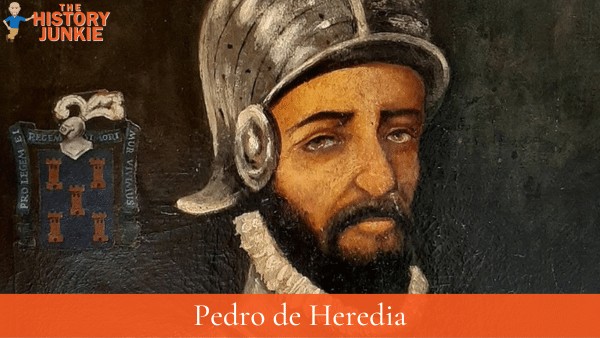
He was the Spanish Conquistador who founded the city of Cartegena de Indias in Colombia. He would explore the interior of Colombia as well.
Pedro de Heredia sailed from Santo Domingo on Christmas Day 1532, bound for the mainland of South America. He cruised off the coast of Santa Marta and past the mouth of the Magdalena River.
On January 14, 1533, he reached Calamari, a large village of the Mokaná Indians, on the sandy inner shore of Cartagena Bay.
Heredia and his men fought fiercely with the natives of the territory of Turbaco but eventually prevailed.
They founded a city on the site of Calamari, naming it after Cartagena in Spain because it had a similar bay. However, Heredia called it "Cartagena de Poniente" to distinguish it from that city.
After the capture and founding of the city, he continued to plunder the coast of Colombia for gold. his plunders were successful and would cause much controversy in Spain, where he would face charges.
In 1552, Heredia faced 289 new charges.
The accusations included:
- Illegal appropriation of royal funds
- Nepotism
- Obstruction of municipal chapter deliberations
- Severe abuses directed toward the native population, such as burning alive, mutilations, and torture.
Heredia was found guilty and discharged from office, and returned to Spain to appeal his sentence. On January 27, 1554, his ship La Capitana, part of Cosme Farfán's fleet, sank off the coast of Zahara de los Atunes.
He tried to swim ashore, but his body was never found.
19. Juan Rodriguez Cabrillo
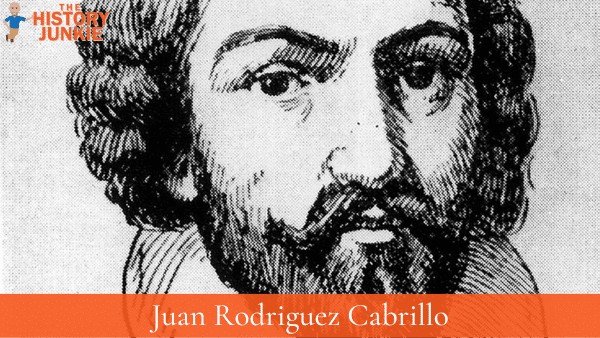
Juan Rodríguez Cabrillo was a Portuguese explorer who led the first European expedition to explore the coast of California in 1542-1543. He is credited with discovering San Diego Bay and Monterey Bay, and he is considered the "Father of California Exploration."
Cabrillo was born in Portugal in c. 1499. He moved to Spain as a young man and joined the Spanish Navy. He served in the conquest of Mexico and Guatemala, and he eventually became a wealthy landowner.
In 1542, Cabrillo was appointed by the Spanish governor of Mexico to lead an expedition to explore the coast of California. He set sail from Mexico in June 1542 with three ships: the San Salvador, the San Miguel, and the Victoria.
Cabrillo's expedition sailed north along the coast of California, and they made landfall at San Diego Bay on September 28, 1542. They explored the bay and the surrounding area, and they named it San Miguel. Cabrillo and his men also made contact with the local Kumeyaay people.
The expedition continued north, and they reached Monterey Bay on October 19, 1542. They explored the bay and the surrounding area, and they named it San Carlos. Cabrillo and his men also made contact with the local Ohlone people.
Cabrillo's expedition continued north, but they were soon forced to turn back due to bad weather. Cabrillo died on January 3, 1543, off the coast of northern California. He is buried on a small island in the Santa Barbara Channel.
20. Phillip von Hutton
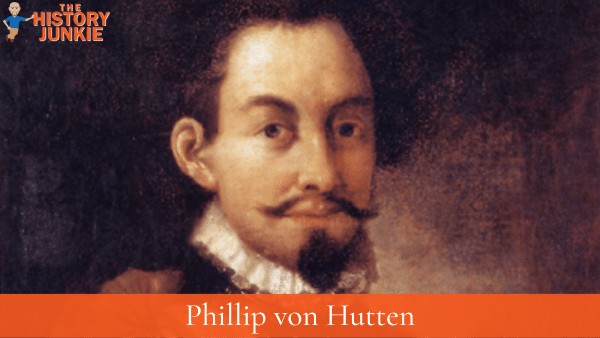
Philipp von Hutten was a German adventurer and explorer who played a significant role in the early history of Venezuela. He was born in Königshofen, Germany, in 1505.
He came to Venezuela in 1535 as part of an expedition led by Georg von Speyer, who had been granted a concession to colonize the region by the Holy Roman Emperor Charles V.
Hutten was a skilled soldier and explorer, and he soon became one of the leaders of the expedition. He led several expeditions into the interior of Venezuela, searching for gold and El Dorado, the legendary city of gold.
He also fought against the indigenous people of Venezuela, and he was known for his ruthlessness and brutality.
In 1540, von Speyer died, and Hutten became the leader of the expedition. He continued to explore Venezuela, but he was never able to find El Dorado.
He also faced increasing opposition from the Spanish authorities, who were concerned about his brutal treatment of the indigenous people.
In 1546, Hutten was captured by the Spanish and executed. He died a broken man, having failed to achieve his dreams of gold and glory.
